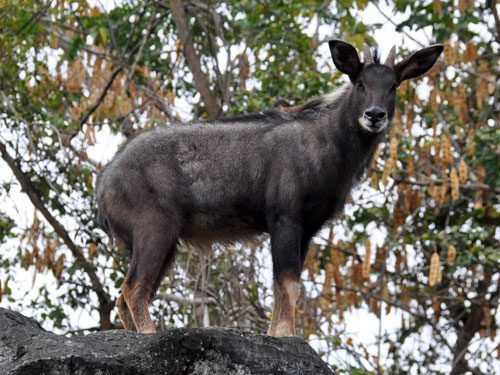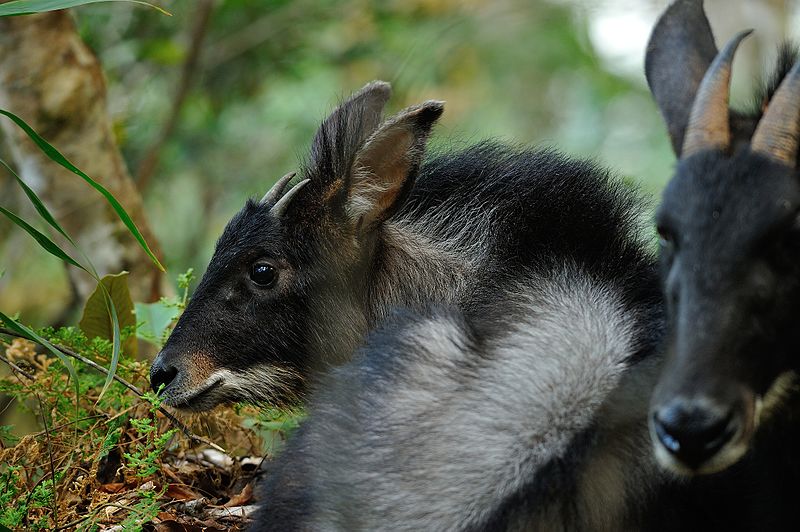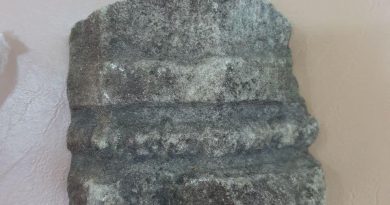Cambodian Critters VI- The Indochinese Serow
The Indochinese serow (Capricornis milneedwardsii maritimus) is a rare goat-antelope- a subspecies of the Chinese Serow, native to Cambodia, Laos, Myanmar, Thailand and Vietnam.
In Cambodia the animal, known in Khmer as សត្វកែះ /sat kɛh/, lives in forested mountain areas on steep, rugged hills and prefers rocky terrain, but is also found in forests and flat areas.

According to Wildlife Conservation Society:
“Previously it was thought that their only major stronghold was in the Cardomom Mountains. However, WCS has photographs from both the Northern Plains forests of Preah Vihear (including Kulen Promtep Wildlife Sanctuary and Preah Vihear Protected Forest) and Cambodia’s newest protected area, the Seima Protection Forest in Mondulkiri. Compiling all the photographs and verified observations of this species across the country will provide a much better understanding of the ecology of the species as it is believed that they can survive in even quite small forested hills.“
The serow can grow up to 180 cm long and 90 cm high at the shoulder, and an adult can weigh over 150 kg.

It was previously classified as a subspecies of C. sumatraensis, but recent moves in zoology have divided the species into Chinese Serow (found north of Myanamar) (C. milneedwardsi milneedwardsii) and Indochinese Serow (C. milneedwardsi maritimus). More research is needed on these sub-species, and the relationship to other species in the genus Capricornis needs to be assessed.
From what has been observed, the serow is territorial and lives alone or in small groups. It usually stays in a small area of only a few square kilometers and grazes on grass, shoots and leaves from along beaten paths. It marks its territory with droppings and markings. It is most active at dawn and dusk, and spends the rest of the day in thick vegetation.
The mainland serow gives birth to a single young usually in September or October. The gestation period is about eight months.
The habitat preferred- rocky slopes and dense vegetation- make the creature very hard to detect and study, but like all mammals in the region, it is under threat from poaching, illegal logging and human encroachment.
Sources: Wikipedia, Zoo Institutes, Thai National Parks, WCS
Read more:
Critters I- The Furries
Critters II- Bat Country
Critters III- Cats
Critters IV- Bearcat
Critters V- Hog Badger





